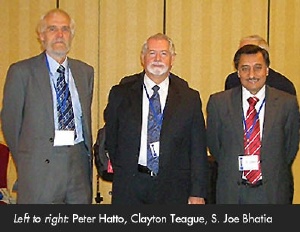Jun 10 2009
The International Organization for Standardization (ISO) Technical Committee (TC) 229, Nanotechnologies, opened its annual plenary meeting yesterday in Seattle, Washington. Over 170 representatives from 23 countries were in attendance to advance the committee's goals in nanotechnology standardization.

A U.S. delegation representing, industry, government, academia and others attended the first day of the plenary. President and CEO of the American National Standards Institute S. Joe Bhatia offered opening remarks that highlighted the significance of nanotechnology standardization activities.
“Nanotechnology is important to global industry, to governments, and to consumers worldwide,” said Mr. Bhatia. “In fact, as of May 2008, the Woodrow Wilson Center has listed over 800 nanotechnology-based products that are currently on the market. More and more products are incorporating this emerging technology each day.
“But as an emerging technology, additional research and development are required to increase viability and practical application – R&D dollars that will, in turn, diversify industry and promote global job growth,” continued Mr. Bhatia. “International Standards are key to the continued development and success of this technology.”
Key ISO/TC 229 leaders also spoke at the plenary opening, including Peter Hatto, Ph.D., chair of the Committee, and Clayton Teague, Ph.D, director of the National Nanotechnology Coordination Office and chair of the ANSI-accredited U.S. Technical Advisory Group (TAG) to ISO/TC 229.
Over the course of the week, the working groups and task groups will meet to progress nanotechnology standards development work in a diverse array of areas, including terminology and nomenclature; measurement and characterization; health, safety, and the environment; and material specifications.
The meeting is being sponsored by 34 organizations, including Platinum-level sponsors Siemens, the National Institute of Standards and Technology (NIST), and RTI International. Mr. Bhatia expressed ANSI’s appreciation for these sponsors, whose level of support underscores that government and industry alike understand the critical importance of this Committee’s work.